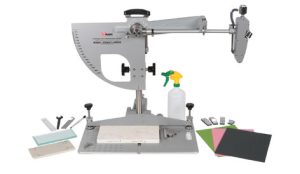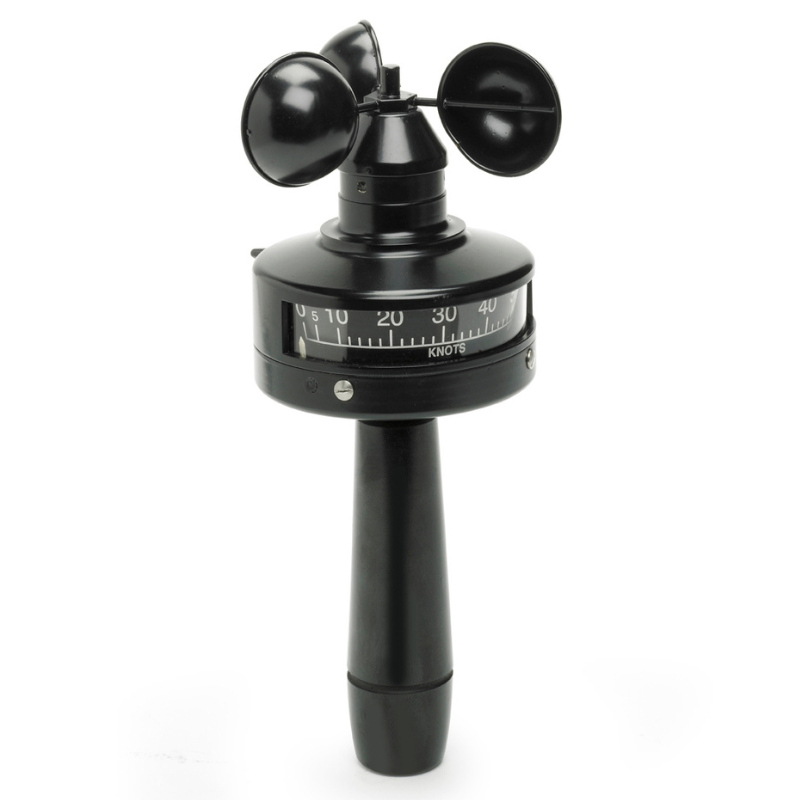It is of course true that there are a few things in life more important that the anti-slip feet on the bottom of a Pendulum. You could even argue that there are many things of higher priority than the components of a BS 7976-2 Pendulum. What should be of the utmost importance to any Pendulum operator however, is the integrity of the testing process and the accuracy of data produced, and the performance of anti-slip feet is supremely important in ensuring this. This is why Munro Instruments are now offering upgraded Pendulum feet.
Practical Considerations
The basic principle of a Pendulum test is just that, a weighted pendulum. The pendulum swings from a point of release, striking the floor and reading the slip resistance of that floor on the overswing. If the pendulum doesn’t come in to contact with the floor then it swings freely to give a 0PTV result.
The pendulum must swing freely in an arc about a fixed point. Whilst the Pendulum frame is sturdy, it wouldn’t be practical to physically fix the machine to the floor, so movement of the frame across the floor has the potential to alter results produced. This is of such importance that measures to increase stability of the frame were introduced by the UK Slip Resistance Group, namely a weighted back foot and anti-slip feet.
The anti-slip feet are a crucial part of a robust testing system. With a weighted back foot and anti-slip feet, the frame is held securely in position, preventing movement and associated variability in results.
UK Legal & Regulatory Requirements
Regardless of the practical benefits of testing with anti-slip feet, the feet are an essential component of a regulator-preferred and UKSRG-defined test process. In short, if you fail to use anti-slip feet, you have not complied with the requirements of testing as directed by the HSE.
With slip resistance testing being so closely associated with slip and fall legal claims, it is essential that testing is conducted in accordance with industry best practice. If your Pendulum doesn’t feature anti-slip pads for the feet, you cannot claim to have tested to the UK-preferred standard. If you haven’t done the test correctly, you shouldn’t expect the results to hold any water in court.
If you are conducting tests outside the UK, I would strongly advise that you check your local standards/requirements as it is likely anti-slip feet have been incorporated as part of the test method given their previously discussed positive impact on accuracy.
The Munro Instruments Anti-slip Feet
The improved feet replace the existing levelling screws in the Pendulum frame. Rather than the pointed tip which previously required an anti-slip pad to sit in, the new screws feature a sturdy plate with a rubberised bottom, essentially incorporating a small anti-slip pad in to the feet themselves.
Unlike other designs there is no movement between pad and foot which could lead to movement of the frame. The rotational fixed pivot of the Munro design rotates with adjustment of the feet, but is otherwise solid and stable, maximising accuracy and repeatability.
The new feet are backwards compatible with all Munro Pendulums, and it is simply a case of swapping out your older levelling screws with the new ones provided. A 5 minute job with a significant impact on both the accuracy and validity of results produced by your machine.
Having been subject to extensive testing in the field, the feet have proven to remain effective on a wide range of materials and in a wide range of conditions, and remain effective even on difficult surfaces such as slopes, stairs and aggressive profiles.
Benefits to Pendulum Operators
If, like me, you have been using a workable but ‘DIY’ pad system, it is well worth an upgrade. Whilst my experience as a Pendulum operator is unusual, I conduct testing daily on sites across the UK, one benefit of the improved Munro anti-slip feet was immediately apparent to me. With the feet attached to the Pendulum frame, I didn’t have to remove and set up the pads 36 times for every test, a blessing both for my aging frame and the efficiency of testing.
Further benefits of the new anti-slip feet include the protection of easily damaged surfaces from the harsh points of the old feet, and the knowledge that the essential pads weren’t going to be forgotten or misplaced during a test remit.
Crucially, the improved factory-fit feet provide excellent performance, and look as if they belong. Aesthetics shouldn’t matter in testing, but any observer is likely to be given a greater sense of confidence in the results with a setup that both looks and performs professionally.







